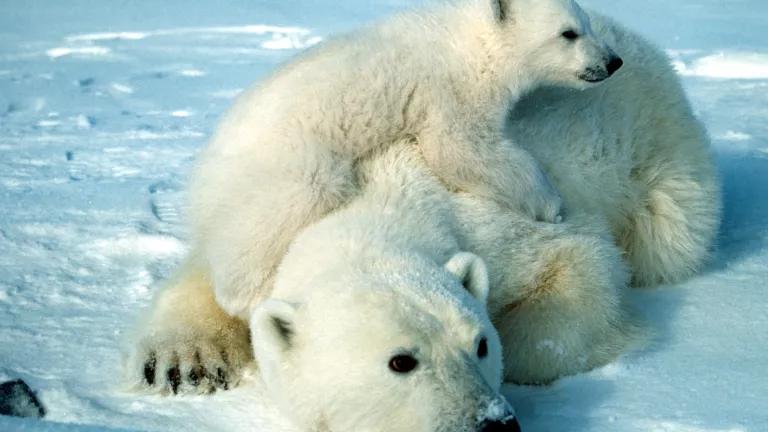
Most everyone wants to do the right thing for polar bears: ensure that the species survives the threats posed by global warming. Unfortunately, that’s where agreement ends. For while most people have the best of intentions for the species – strengthening populations and ensuring their survival – common ground breaks down immediately when it comes to characterizing the threat posed by global warming and polar bears’ ability to survive what’s coming. But if we all don’t get on the same page soon, it’s going to be too late.
That’s one of the things I learned last week when I attended a meeting of the polar bear range states (Canada, Greenland, Norway, Russia, and the United States) in Iqaluit, Canada. Technically, it was a Meeting of the Parties to the 1973 Agreement on the Conservation of Polar Bears, and I attended as an “observer,” which meant that I and representatives from other nongovernmental organizations were excluded from parts of the meeting. Regardless of the fact that I was not able to “observe” all of the meeting, the trip was incredibly informative. We spoke with several delegations and individuals attending the meeting about the threats polar bears face, most notably the threats from global warming, but also the threats posed to polar bears by unsustainable harvest and pollution.
Particularly informative was a presentation made by the International Union for the Conservation of Nature’s “Polar Bear Specialist Group,” the Agreements’ formal scientific advisor. The presentation was packed with information, but its bottom line was that global warming poses a deadly threat to polar bears as a species; it’s not an issue of if polar bears will be wiped out if we do not adequately address global warming, but when. There’s room for uncertainty at the edges (no one is able to predict the exact year that polar bears will only exist in zoos), but there’s no uncertainty as to the end game for the species if we continue business as usual, which can be summed up in three letters: R.I.P.
In the face of this information, I would expect broad agreement that we should do everything we can to protect polar bears for as long as possible, giving them the best chance to make it until we stop dragging our feet on global warming. Thus, we should reduce the pollution in the Arctic that accumulates in polar bears, we should limit development activities like oil and gas that harm polar bears, and we should be absolutely certain that any harvest of polar bears is sustainable in the long-term. Given the real and deadly threat of global warming, there’s no room for error.
But there is no broad agreement on these measures. At first I thought it was just an issue of people not seeing the forest through the trees – maybe they were unfamiliar with the climate change science. But it turns out that it’s an issue of denying these trees could ever make up a forest. People ascribing to this view accept that climate change poses a threat, but believe that polar bears will adapt. However, there’s very little scientific evidence supporting this view
So, yes, we can all agree that polar bears should be protected. But when that protection requires real sacrifice on the part of range states, the equivocation begins.
